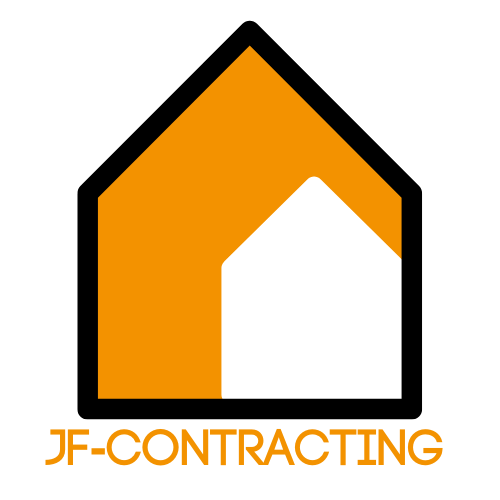Renting a house can feel like navigating a maze blindfolded—exciting yet daunting. With so many options and potential pitfalls, it’s easy to get lost in the process. But fear not! With the right tips in your toolkit, you can turn that maze into a smooth stroll through the park.
Understanding the Renting Process
Navigating the renting process requires specific knowledge and preparation. Understanding key steps can help simplify the experience.
Researching Your Market
Researching the local rental market proves essential for finding the right house. Analyze property prices in preferred neighborhoods. Familiarity with average rental rates aids in setting a reasonable budget. Compare amenities and features among similar listings. Use online resources and real estate websites to gather information. Check rent trends over time to gauge stability. Engage with local rental agents for insights. Networking with current residents can also yield valuable advice.
Budgeting for Rent and Expenses
Budgeting for rent and associated expenses matters for financial planning. Begin by calculating monthly rent, ensuring it aligns with income. Consider additional costs such as utilities, internet access, and maintenance fees. Factor in security deposits and application fees when creating a budget. Allocate funds for moving expenses, like transportation and new furnishings. Save for unforeseen circumstances to prevent financial strain. Creating a detailed budget guides decision-making throughout the renting process.
Finding the Right Property


Finding a suitable rental property requires careful consideration and planning. Assessing individual needs forms the foundation of a successful search.
Determining Your Needs
Establishing priorities for features and amenities simplifies the decision-making process. Consider the number of bedrooms, proximity to work or school, and access to public transportation. Identifying pet policies is essential for animal owners, while outdoor space appeals to many. Create a list of must-haves and nice-to-haves to guide the search efficiently.
Using Online Resources
Utilizing online platforms streamlines the search for rental properties. Websites like Zillow, Rent.com, and Craigslist provide access to a wide variety of listings. Filtering options based on specific criteria, such as price range and location, helps narrow the field. Additionally, online reviews offer insight into neighborhoods and landlords, assisting in making informed choices. Subscribing to alerts keeps applicants updated on new listings that match their criteria.
Viewing and Evaluating Rental Properties
Viewing rental properties plays a crucial role in finding the right house. Proper preparation makes a significant difference in evaluating options effectively.
Preparing for Property Viewings
Preparing for property viewings starts with creating a checklist. Identify must-have features, such as the number of bedrooms or proximity to public transport. Scheduling multiple viewings in one day helps compare properties more easily. Bring a notepad to jot down thoughts or impressions for each property visited. Additionally, taking photos can assist recall later when choices need to be made. Arriving a few minutes early allows time to observe the neighborhood atmosphere and amenities.
What to Look for During Viewings
What to look for during viewings involves assessing both the interior and exterior. Inspect for any signs of damage, such as water stains or cracked walls. Check the functionality of appliances included in the rental. Verify that windows open and close properly, ensuring good ventilation. Evaluate the space and layout to determine if it suits personal lifestyle requirements. Asking questions about utility costs or previous repairs helps gauge property maintenance. Observe surrounding properties as well; a well-maintained neighborhood often indicates a reliable landlord.
Negotiating the Lease
Negotiating a lease can significantly impact rental agreements. Clarity on lease terms helps establish strong communication between tenants and landlords.
Understanding Lease Terms
Understanding lease terms is essential before signing any agreement. Readers should familiarize themselves with critical components such as lease duration, rent amount, security deposits, and maintenance responsibilities. Rental agreements typically outline penalties for late payments or breaking the lease early. Knowing these details enables informed decisions, avoiding unexpected surprises in the future. Additionally, some leases offer options for renewal, so identifying those clauses helps tenants prepare for the future.
Tips for Negotiation
Negotiation can lead to more favorable lease conditions. First, conduct research on comparable properties in the area; this knowledge strengthens bargaining power. Second, identify specific concerns with the lease, such as high pet fees or unclear maintenance responsibilities. Proposing reasonable changes allows both parties to reach a mutually beneficial agreement. Third, consider offering a longer lease term in exchange for lower monthly rent. Lastly, approach negotiations with a cooperative attitude; maintaining respect promotes a positive relationship with the landlord.
Finalizing Your Rental Agreement
Securing a rental property involves critical steps that ensure a smooth transition into a new home. Attention to detail at this stage can prevent future misunderstandings.
Reviewing the Lease Agreement
Understanding the lease agreement stands as a vital part of the rental process. Each clause within the lease carries significant implications for the tenant and landlord relationship. Begin by reading the entire document carefully, focusing on key terms like rent amount, lease duration, and rules regarding property use. Look out for details about maintenance responsibilities and penalties for late payments. Questions may arise regarding unclear sections; clarifying these with the landlord ensures mutual understanding. Seek to negotiate any unfavorable terms, keeping the communication open and respectful. Always keep a signed copy for personal records to reference later.
Deposit and Move-In Procedures
Moving forward with the rental process requires attention to the deposit and move-in steps. Typically, landlords request a security deposit, often equivalent to one month’s rent. This deposit safeguards against potential damages or unpaid rent. Ensure you understand the conditions under which the deposit may be withheld. Prior arrangements for the move-in date facilitate a smooth transition, allowing time for utility setup and potential repairs. Prior to moving in, schedule a walkthrough with the landlord to document the property’s condition. Taking this step protects both parties and serves as a reference should disputes arise later.
Navigating the rental market doesn’t have to be daunting. By following these essential tips, renters can approach the process with confidence and clarity. Understanding the local market and budgeting wisely sets a solid foundation for success.
Prioritizing needs and utilizing online resources streamlines the search for the perfect property. Careful evaluation during viewings ensures that prospective renters make informed decisions.
Effective negotiation can lead to favorable lease terms, while thorough review of agreements protects against future issues. With the right preparation and mindset, anyone can find a rental home that meets their needs and enhances their lifestyle.










